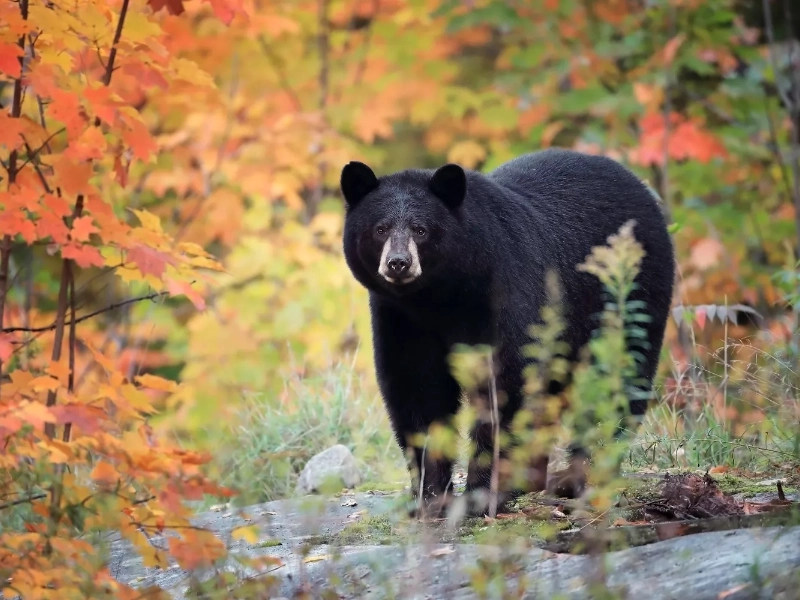4. The American Black Bear: A Master of Adaptation

One species that best shows adaptation and fortitude against changing surroundings is the American Black Bear (Ursus americanus). From the swamps of Florida to the Alaskan forests, and even as far south as northern Mexico, this bear species has shown an amazing capacity to flourish over a great swath of North America. Though its name suggests otherwise, the American Black Bear defies our expectations regarding this familiar but sometimes misinterpreted animal by displaying an astonishing variety in coat colour.
The great adaptability of the American Black Bear's diet and behaviour helps to explain its species success. Black bears are actual omnivores, able to survive on a great range of foods depending on availability and season, unlike some bear species with more specialised dietary needs. Grasses, roots, berries, insects, fish, small animals, and even carrion can all find place in their diet. From dense deciduous forests to open tundra and even semi-urban areas where they sporadically venture in search of food, this dietary adaptability lets them live in many environments.
The American Black Bear's ability for climbing is among its most amazing features. Black bears have short, sharp claws that make them great climbers unlike their more expansive cousin, the grizzly bear. In their survival plan, this ability fulfils several functions. It gives cubs a safe refuge when threatened, lets them quickly flee danger, access food supplies including nuts and fruits high in trees, and Their varied diet and climbing ability have helped black bears flourish in places where other big predators might find difficulty.
Contrary to popular belief, not all American Black Bears are actually black in color. Their coat can range from jet black to various shades of brown, cinnamon, and even blonde or white. The white variant, known as the Kermode or spirit bear, is particularly fascinating. Found primarily in the coastal regions of British Columbia, Canada, these white bears are the result of a rare recessive gene. They are not albinos, as they still have pigmented skin and eyes, but their unique coloration has made them sacred to some Indigenous peoples of the Pacific Northwest.
The size of American Black Bears can vary considerably depending on habitat quality, food availability, and geographic location. Male black bears, known as boars, can sometimes grow to impressive sizes, with some individuals exceeding 600 pounds (272 kilograms). However, this is exceptional, and most male black bears typically weigh between 200 to 600 pounds (90 to 272 kilograms). Females, or sows, are generally smaller, rarely exceeding 200 pounds (90 kilograms). This sexual dimorphism is common among bear species and plays a role in their social and reproductive behaviors.
Like other bear species, American Black Bears undergo a period of winter dormancy, often referred to as hibernation. However, the extent and duration of this dormant period can vary greatly depending on the geographic location and local climate. In warmer southern regions, some black bears may not hibernate at all, while those in colder northern areas may den for up to seven months. During this time, bears do not eat, drink, urinate, or defecate, subsisting entirely on their fat reserves. Remarkably, female bears can give birth and nurse their cubs during this period of dormancy, a unique adaptation that helps protect vulnerable newborns during the harsh winter months.
The American Black Bear's ability to adapt to human-altered landscapes has led to both positive and negative interactions with human populations. While their adaptability has helped them survive in areas where other large predators have disappeared, it has also led to increased human-bear conflicts in some regions. As human development continues to encroach on bear habitat, conservation efforts focus not only on protecting wilderness areas but also on educating communities about coexisting with these remarkable animals.
In conclusion, the American Black Bear represents a success story in animal adaptation. From its varied diet and impressive climbing skills to its ability to thrive in diverse habitats, this species continues to capture the imagination of scientists and nature enthusiasts alike. As we continue to share landscapes with these intelligent and adaptable creatures, understanding their behavior and needs becomes increasingly important for ensuring their long-term survival and minimizing conflicts with human populations.

